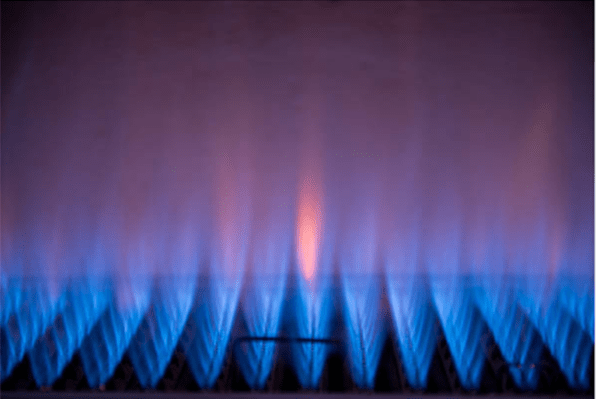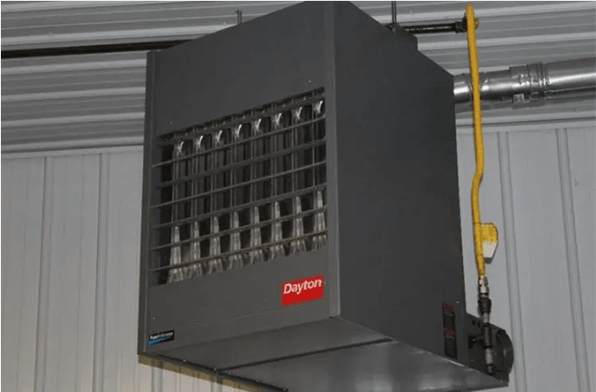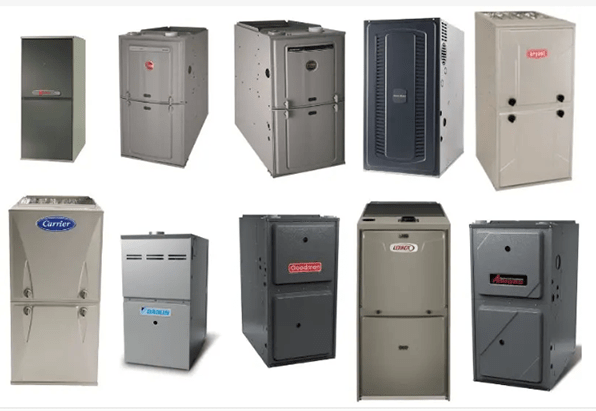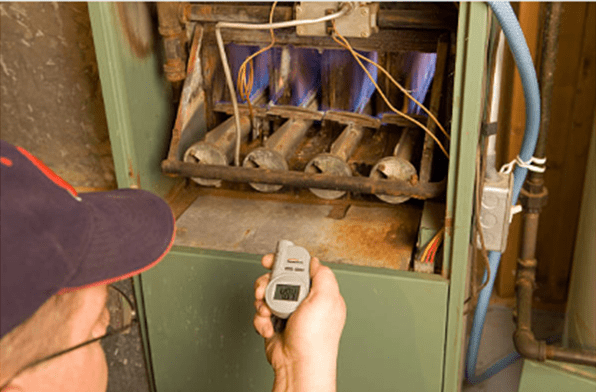
Figure 1: Heat pump vs. gas furnace.
As winter approaches, many homeowners are faced with the question of which heating system to choose for their home. The two most popular options are heat pumps and gas furnaces. Each has its own set of advantages and disadvantages.
In this article, we will explore the pros and cons of heat pump vs gas furnace to help you make an informed decision.
1. Heat Pump Overview
A heat pump is an electric device that uses refrigerant to transfer heat from one place to another. In winter, it extracts heat from outside air or the ground and moves it into your home to warm it up. In summer, it works in reverse, removing heat from your home and transferring it outside to cool it down.
1.1 Main Components of a Heat Pump
Evaporator: This is the part of the heat pump that absorbs heat from the surrounding air or ground.
Compressor: The compressor pumps refrigerant through the heat pump, increasing its temperature and pressure.
Condenser: The condenser releases the heat absorbed by the evaporator to the indoor air or water.
Expansion valve: The expansion valve controls the flow of refrigerant between the high-pressure side (condenser) and the low-pressure side (evaporator) of the heat pump.
Refrigerant: The refrigerant is the substance that circulates through the heat pump and absorbs and releases heat.
Air handler or ductwork: The air handler or ductwork distributes heated or cooled air throughout the building.
Thermostat: The thermostat regulates the temperature in the building by turning the heat pump on or off as needed.

Figure 2: Schematic diagram of air source heat pump (air-water) unit.
1.2 How Does a Heat Pump Work?
A heat pump works by using a refrigerant to transfer heat from one location to another. In heating mode, the heat pump extracts heat from the outside air and transfers it inside, while in cooling mode, it extracts heat from the indoor air and transfers it outside.
The heat pump has two coils, an indoor coil and an outdoor coil, which are used to transfer heat to or from the air inside the building. The system is controlled by a thermostat, which senses the temperature inside the building and turns the system on or off as needed to maintain the desired temperature.
Heat pumps are an efficient and effective way to provide both heating and cooling for buildings.
2. Pros of Heat Pumps
â— Energy Efficiency: Heat pumps are highly energy-efficient, especially when compared to traditional heating systems such as gas furnaces. They can provide up to four times more energy than they consume, making them a great choice for those looking to reduce their energy bills.
â— Versatility: Heat pumps can be used for both heating and cooling, which makes them a versatile option for homeowners. You won't need to invest in separate systems for heating and cooling your home, which can save you money in the long run.
â— Environmentally Friendly: Heat pumps produce fewer greenhouse gas emissions than gas furnaces, making them a more environmentally friendly option.
â— Safe: Heat pumps don't use any combustible fuel, which means there is no risk of carbon monoxide poisoning or gas leaks.

Figure 3: Heat pump unit for air conditioning.
3. Cons of Heat Pumps
â— Initial Cost: Heat pumps can be expensive to install, especially if you need to replace your existing heating system. However, the long-term energy savings can offset the initial cost.
â— Lower Heating Capacity: Heat pumps may struggle to keep your home warm in extremely cold temperatures. If you live in an area with harsh winters, you may need to invest in a backup heating system.
â— Regular Maintenance: Heat pumps require regular maintenance to ensure they are functioning properly. This can be an additional expense for homeowners.
4. Gas Furnace Overview
A gas furnace is a traditional heating system that burns natural gas to produce heat. The heat is then distributed throughout your home via ducts and vents.

Figure 4: Burning natural gas.
4.1 Main Components of a Gas Furnace
Burners: The burners are where the natural gas or propane is ignited and burned to create heat.
Heat exchanger: The heat exchanger transfers heat from the burning gas to the air that will be circulated through the home.
Blower: The blower is responsible for circulating the heated air through the ducts and into the rooms of the house.
Vent pipe: The vent pipe carries exhaust gases out of the house and into the atmosphere.
Gas valve: The gas valve controls the flow of natural gas or propane into the burners.
Igniter: The igniter ignites the gas in the burners.
Thermostat: The thermostat regulates the temperature in the home by turning the furnace on or off as needed.
Air filter: The air filter removes dust and other particles from the air before it is circulated through the home.

Figure 5: Dayton gas furnace.
4.2 How Does a Gas Furnace Work?
A gas furnace works by burning natural gas or propane to create heat, which is then distributed throughout a building. Here's how it works:
Gas is ignited in the furnace's burner, creating a flame.
The heat from the flame is transferred to a heat exchanger, which is a metal component that gets hot and heats the air that passes over it.
The heated air is then blown through ducts to different parts of the building via a blower motor and fan.
As the air cools, it is returned to the furnace through return ducts to be heated again.
The furnace is controlled by a thermostat, which senses the temperature inside the building and turns the system on or off as needed to maintain the desired temperature.
Gas furnaces are a popular choice for heating in many parts of the world due to their efficiency and affordability.

Figure 6: Different sizes and brands of gas furnaces.
5. Pros of Gas Furnaces
â— High Heating Capacity: Gas furnaces are designed to handle extreme cold temperatures, making them a great choice for those who live in areas with harsh winters.
â— Affordable: Gas furnaces are generally less expensive than heat pumps, especially if you already have a gas line installed in your home.
â— Low Maintenance: Gas furnaces require very little maintenance, which can save you money in the long run.
6. Cons of Gas Furnaces
â— Energy Inefficiency: Gas furnaces are not as energy-efficient as heat pumps, which means they can be more expensive to operate over time.
â— Safety Concerns: Gas furnaces pose safety risks such as carbon monoxide poisoning and gas leaks. Regular maintenance and inspections are necessary to ensure your system is functioning safely.
â— Environmental Impact: Gas furnaces produce more greenhouse gas emissions than heat pumps, making them a less environmentally friendly option.

Figure 7: Check gas furnace output temperature.
7. Which System is Right for You?
When deciding between a heat pump vs gas furnace, it's important to consider your specific needs and budget. If you live in an area with mild winters, a heat pump may be a great option for you.
However, if you live in an area with harsh winters, a gas furnace may be a better choice. Additionally, if you already have a gas line installed in your home, a gas furnace may be more affordable to install.
Ultimately, the decision between a heat pump vs gas furnace comes down to your personal preferences and circumstances. Consider the pros and cons of each system, as well as your budget and heating needs, before making a decision.
8. FAQs
8.1 Is It Worth Replacing Gas Furnace with Heat Pump?
Whether it is worth replacing a gas furnace with a heat pump depends on various factors such as the climate, energy costs, and personal preferences.
In regions with moderate to mild winters, a heat pump can be a cost-effective and energy-efficient alternative to a gas furnace. However, in colder climates, a gas furnace may still be more effective and reliable.
Additionally, the upfront cost of purchasing and installing a heat pump may be higher than that of a gas furnace. Therefore, it is essential to consider all these factors before deciding whether to replace a gas furnace with a heat pump.
8.2 What is the Downside to a Heat Pump?
One downside to a heat pump is that it may not be as effective in extremely cold climates. When the outdoor temperature drops below freezing, the heat pump may struggle to extract enough heat from the air outside to warm the inside of the home. In such cases, an auxiliary heating system may be needed to supplement the heat pump.
Another potential downside to a heat pump is its higher upfront cost compared to other heating systems, such as a gas furnace. However, over time, the energy savings from using a heat pump may offset the initial investment.

Figure 8: Heat pump outdoor units.
8.3 How Much More Efficient is a Heat Pump vs a Gas Furnace?
The efficiency of a heat pump compared to a gas furnace depends on several factors, such as the climate, energy costs, and the specific models being compared.
Generally speaking, heat pumps are more efficient than gas furnaces when it comes to converting energy into heat. According to the US Department of Energy, an air-source heat pump can be up to 50% more efficient than a gas furnace in moderate climates, while ground-source heat pumps can be even more efficient.
However, in colder climates where temperatures regularly drop below freezing, a gas furnace may be more efficient and cost-effective due to the reduced efficiency of a heat pump at very low temperatures.
8.4 At What Temperature is a Heat Pump Useless?
A heat pump is not necessarily useless at any specific temperature, but its efficiency can decrease as the outdoor temperature drops. The point at which a heat pump becomes less efficient and may not be able to provide enough heat for a building's needs varies depending on the specific system and climate conditions.
In general, air-source heat pumps become less effective when temperatures fall below freezing, while ground-source heat pumps can maintain their efficiency in much colder temperatures. However, backup heating systems are often installed alongside heat pumps to ensure adequate heating during extreme cold snaps.
Related Info
Are Window Heat Pumps Efficient? (Window Heat Pump: Everything You Need to Know)What are the Pros and Cons of Heat Pumps
Why is My Heat Pump Icing Up? Understanding the Causes and Solutions
Heat Pump Not Working in Cold Weather: Causes and Solutions
How Does a Heat Pump Work in Winter?


